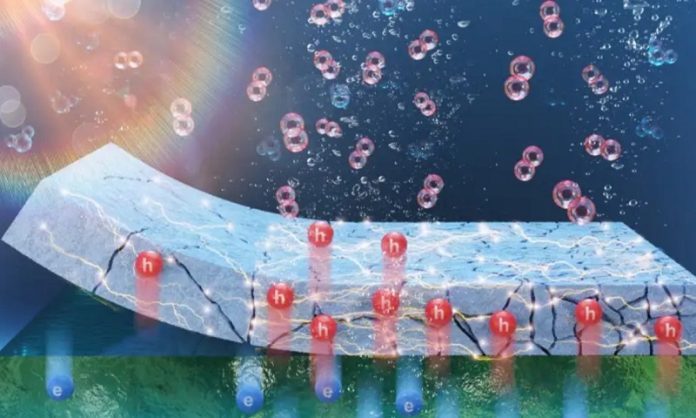
Hydrogen, a promising clean energy source, has been gaining attention worldwide.
However, it’s important to consider how it is produced.
Most hydrogen currently used comes from fossil fuels, making it less environmentally friendly.
But now, researchers at the Korea Research Institute of Standards and Science (KRISS) have made a groundbreaking discovery that could bring us closer to the era of green hydrogen—hydrogen produced without harmful emissions.
Let’s delve into their exciting findings!
The KRISS team has found a way to use sunlight to produce hydrogen through a process called photoelectrochemical water splitting.
They developed a photoanode—a special material that absorbs sunlight and splits water molecules into hydrogen and oxygen. This ingenious method allows for the production of green hydrogen without releasing harmful greenhouse gases.
However, a challenge arises when the photoanode comes into contact with the electrolyte. The interaction can lead to surface corrosion, affecting its efficiency and lifespan.
To tackle this issue, the researchers developed a protective film made of titanium dioxide (TiO2). This film shields the photoanode from corrosion, extending its lifespan and maintaining optimal performance.
The KRISS team achieved a remarkable feat by controlling the levels of oxygen defects in the TiO2 protective film. Oxygen defects act as channels for charge transport, enhancing the electrical conductivity of the film.
Through careful modulation, they found the optimal levels of defects that maximize hydrogen production efficiency and increase the lifespan of the photoanode.
In their experiments, the researchers discovered that a photoanode without a protective film degraded rapidly, resulting in a significant drop in hydrogen production efficiency.
However, the photoanode with the optimized protective film maintained an impressive hydrogen production efficiency of over 85% even after 100 hours.
This remarkable achievement could revolutionize the field and pave the way for the commercialization of green hydrogen.
The impact of this breakthrough extends beyond hydrogen production.
The enhanced durability and efficiency of the photoanodes could be applied to other clean technologies, such as artificial photosynthesis, which utilizes solar energy to convert carbon dioxide into valuable chemical energy sources.
Dr. Ansoon Kim, a principal researcher at KRISS, emphasizes the significance of this research in improving the lifespan and efficiency of photoanodes.
By extending the lifespan of photoanodes by approximately 10 times, this innovation is a major step toward making green hydrogen a commercially viable and environmentally friendly energy solution.
Thanks to the ingenuity of the researchers at KRISS, the era of environmentally friendly green hydrogen is drawing closer.
Their discovery of an optimized protective film for photoanodes has greatly increased their lifespan and efficiency. By harnessing sunlight, we can produce hydrogen without harmful emissions.
This achievement not only benefits hydrogen production but also holds promise for other clean technologies. Let’s embrace this exciting step towards a brighter and greener future!



